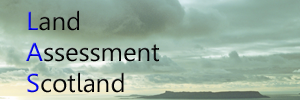Inishail and Clachandysart (Glenorchy)
Principal Sources
RMS I App 2 (1940) Index A, (38) Index B
RMS III (2648) 1542
RMS IV (944) 1554, (1025) 1529, (1055) 1556, (1592) 1564-5
RMS VI (209) 1594-5
RMS VII (265) 1610
APS VII p 104 1671
Argyll Retours (58) 1640, (90) 1686, (99) 1700
RHP 962 Auchnacrive & Barbrack 1748
RHP 3091
RHP 30419
CSSR IV No 791 1441
Historical Manuscripts Commission IV p 473 No 4 1375, p 479 Nos 113-116
HP IV p 33 1556 p 199 1432
TSES Vol V, Pt I, 1916, p 56
Acts of the Lords of Council in Civil Causes II p 159 1498
Clan Campbell IV pp 393-4 1774
Kist 57
AS I (183) 1621, (280) 1645, (313) 1649, (325) 1650, (342) 1651, (400) 1659, (436) 1660
AS II (20) 1618, (93) 1620, (105, 107, 122) 1621, (141, 144) 1622, (182) 1624, (260-1) 1628, (270, 286, 288-9) 1629, (315, 354, 357) 1630, (451, 454, 462-3, 478, 485) 1633, (498, 500-501, 505, 526) 1634, (646) 1640, (695-6) 1642, (829, 833-4) 1654, (886, 904) 1655, (923) 1656, (949) 1657, (969) 1658, (1003, 1019) 1661, (1120) 1663, (1153) 1664, (1246) 1665, (1508-9) 1669
GD 112/1/5 1432
GD 112/1/468 1624
GD 112/2/2/1 1656
GD 112/2/2/8 1665
GD 112/2/2/11 1673
GD 112/2/2/12 1665
GD 112/2/2/15 1680
GD 112/2/5/2
GD 112/2/9/29 1717
GD 112/2/14/1 1765
GD 112/2/14/24
GD 112/2/30a 1664
GD 112/2/35/1 1565
GD 112/2/35/4 1574
GD 112/2/44 1670
GD 112/2/81/1 1519
GD 112/2/81/3 1540
GD 112/2/81/4 1540
GD 112/2/81/5 1544
GD 112/2/81/17 1604
GD 112/2/85/2/7 1736
GD 112/2/86/7 1684
GD 112/2/87/4/7 1699
GD 112/2/93/1 1728
GD 112/2/99 1675
GD 112/2/117/1/4 1584
GD 112/2/132/11 1699
GD 112/2/144 1661
GD 112/9/23 1666
GD 170/40 1550
GD 170/41 1561
GD 170/87 1686
Assuming that the Water of Teatle was the march between Dysart and Inishail parishes then my total for Dysart is 100½m. OPS II, I p 137 gives a reference from the Breadalbane Inventory to 80m Glenorchy in 1523. (This may be exclusive of Glen Strae which was 20m). OPS II, I p 137 gives a reference from the Black Book of Taymouth to 100m Glenurchy and other lands in 1610. It seems safe to conclude that the true total for Glenorchy was 100m and that within this Glen Strae was a discrete 20m unit.
I have no pennyland references for either Glenorchy or the east side of Inishail parish. (However they are found further down the east side of Loch Awe in both Kilchrenan and Dalavich parishes). They undoubtedly existed for the west side of Inishail parish but with only one reference dating from 1375 it is difficult to establish a robust pennyland to merkland ratio. I suspect it was 1d:2m which would match with the situation in Kilmore & Kilbride to the west and Ardchattan to the north.
The combined parish of Glenorchy and Inishail is important for establishing the eastern limits of the pennyland assessment system. I do not find a single unequivocal Norse farm-name in Glenorchy parish or either the western or eastern sections of Inishail parish. (Catnish in Glenorchy is an -innis, not a -ness). On the other hand West Inishail was undoubtedly part of the Norse pennyland system. Dalavich and Kilchrenan also offer no Norse farm-names but both were embedded in the pennyland extent. Whatever we may conclude about Norse settlement around Loch Awe they certainly exercised political control and most of Loch Awe is demonstrably within their fiscal system.
The situation on Loch Awe is probably analogous to Loch Fyne. We find no Norse farm-names or pennyland references in either Kilmorich or Glen Shira. However both parishes centred on Loch Fyne which shows plenty of Norse settlement elsewhere along its shores. It seems reasonable to conclude that Kilmorich and Glen Shira were part of the Norse political and fiscal world even if that only amounted to a shallow and transient overlay.
Returning to Loch Awe it seems likely that neither Norse control nor pennylands extended north of Teatle Water or east of Allt Mhoille. The situation in that section of Inishail parish which lies east of Loch Awe is more ambiguous. There are pennylands immediately SW in the eastern sections of Kilchrenan and Dalavich parishes. West Inishail has pennylands. To the east lies Meall nan Tighearn which represents the northern boundary of Cowal. To the north lies Glenorchy which was clearly not part of the Norse world. East Inishail must have been at or near the frontier between Norse and Scot and we simply do not have enough evidence for a conclusion.
One other potentially significant aspect of Inishail parish is the presence of two Tir-names within the land-assessment jigsaw. Tirvadich (now Hayfield) and Tervine both lie in West Inishail but there may also have been a Tircladich in East Inishail (see Kist 57 article by M McGrigor). Lindaill appears as a place-name in East Inishail in Minutes of the Synod of Argyll Vol 1 p52 of 1642. If genuine, this looks Norse.
It is difficult to come to a conclusion about Inishail since the eastern and western halves of the parish are slightly imbalanced. East Inishail comes to 31m, West Inishail to 45½m. It is tempting to assume that both halves were originally 40m and that one has lost while the other has gained in relation to neighbouring parishes. Unfortunately I don’t think we have enough evidence to reach a firm conclusion. Smith gives 168½m for Glenorchy and Inishail together.

Leave a Reply